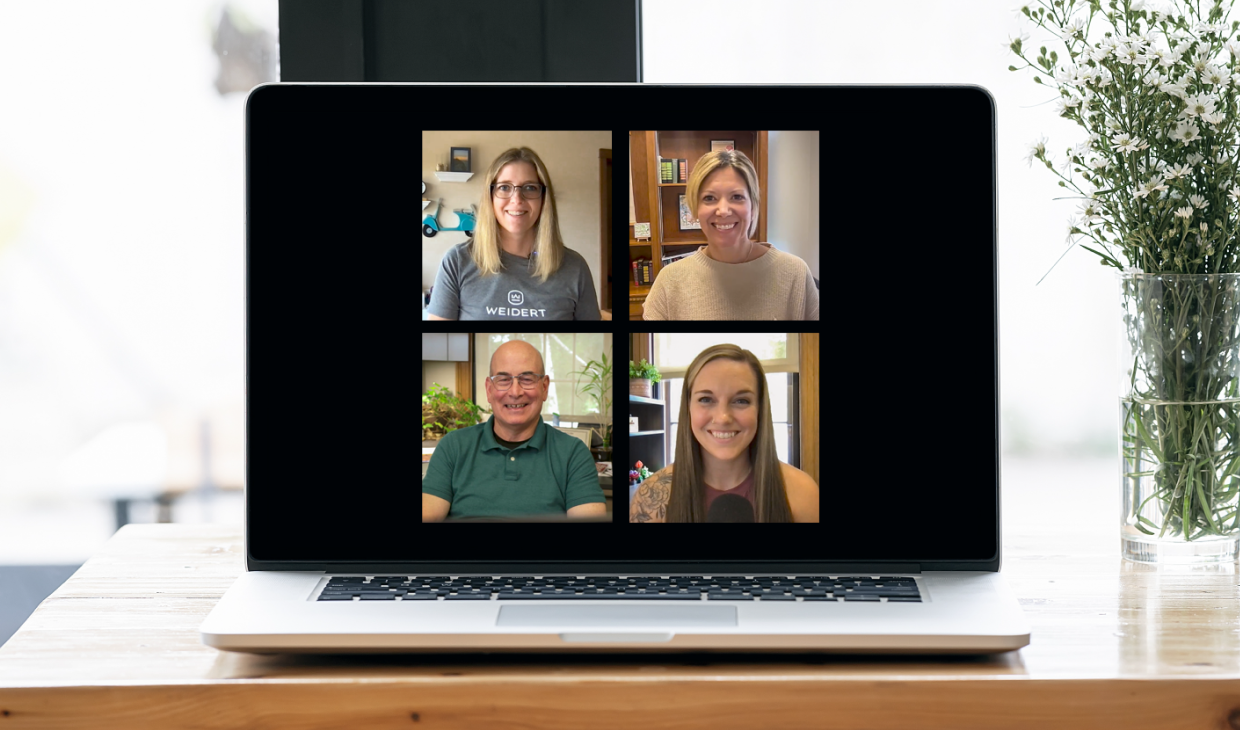10 Ways to Improve B2B Email Marketing Strategies in 2025
Written by
Struggling to keep up with your inbox? So are your prospects.
According to Gartner, B2B buyers and consumers feel overwhelmed by how many emails they receive, and nearly 7 in 10 set up a junk email account to dodge unwanted emails.
Despite the challenges, email continues to be one of the best ways to engage your audience, including those all-important marketing-qualified leads. It’s hard to thumb your nose at a marketing tactic that boasts an impressive ROI of $36 for every $1 spent.
We’ve gathered the latest insights to help your email campaigns get noticed in the coming year. Not gonna lie, some of these are tried-and-true email best practices from years past, but are worth repeating because they simply work.
Dial in your efforts and energize your sales and marketing program using these proven B2B email marketing strategies.
1. Get Personal
4 out of 5 marketers personalize emails with profile data and 64% personalize them by segment. (HubSpot)
People crave human connection; I know I do. Even when engaging with digital platforms like email, you can improve your engagement by including personalization. But don’t narrowly define it as using first names in subject lines or greetings.
A great way to personalize emails is by using smart content to reference job titles and company names, region-specific information, past content engagement, and relevant CTAs. Using personalization within the email body can give the message a more conversational and individualized feel.
Remember that personalization goes both ways. Don’t send your emails from a generic “info@” email address. People want to interact with real humans, not a random sales or marketing address.
2. Write a Compelling Subject Line
The subject line can make or break your email open rate. In general, be brief, stay specific, show your personality, and don’t shout (lay off the exclamation points).
Subject lines that create a sense of urgency help increase open rates, as do promotions with deadlines. Phrases like “You’re invited” or “An exclusive offer for you” can also be effective. Other engaging phrases include:
- “2025” or the deadline for a promotion
- “Limited”
- “In-Stock”
- “Do’s and Don’ts”
- “Oops” “Uh oh” and “Yikes”
Remember to use personalization where appropriate. Seeing their name in the subject line may create a brief pause that leads to a click. Speaking of brief, as our friend Jay Schwedelson of Guru Media recently shared, the first few characters of your subject line matter more than all the rest.
The most successful emails have subject lines with no more than 80 characters. Shorter is better because most email platforms cut off text and replace it with the dreaded ellipsis. To help, emojis — used sparingly and appropriately — can make a succinct point and make your message stand out.
3. Leverage AI
95% of marketers who use generative AI for email creation rate it “effective”, with 54% rating it “very effective.” (HubSpot)
If you’re like me and have spent more time than you care to admit staring at a blank screen when trying to write a marketing email, you’re in luck. HubSpot’s AI email writer offers a helping hand by providing recommended click-worthy content based on your prompts and stated goals. HubSpot’s software is built into HubSpot’s marketing and sales tools, so you can easily draft, send, track, and analyze your email efforts in one place.
And with AI writing assistants now in the mix, you can take email personalization to a whole new level by creating AI agents who take into account everything they know about the prospect and tailor the email body to them. Personalization tokens alone are so "2022."
No matter which AI platform you use, though, always review it and tailor it to your tone and voice. I can spot a verbatim AI message a mile away, and so can your prospects.
AI can also help your sales teams summarize and organize their inboxes within HubSpot’s Sales Hub features to enhance the effectiveness of teams using sales emails in the CRM.
RELATED: How to Leverage Generative AI for Sales Emails
4. Conduct A/B Testing
Quality assurance, A/B, and spam testing your emails generate up to 28% higher returns. HubSpot)
A/B testing is one of the most efficient ways to learn about your audience. Comparing the performance of two versions of an email demonstrates what your audience gravitates toward and will click.
Defining your goals will help determine what to test. If it’s the open rate, then testing the subject line makes sense, or you might want to test the day/timing of your email sends. If you typically have a decent open rate and want to increase conversions, play around with the placement of your CTA, and so on. The key with any A/B test is to change only one element at a time. Otherwise, you’ll have no clue why one version performed better.
Platforms like HubSpot make A/B testing easy by analyzing each version using a small sample set over a set period and then releasing the remaining emails based on the best performance.
5. Segmentation
A lack of relevancy is a sure way to increase your unsubscribe rate or, worse, have your emails marked spam. Never lump all recipients together under one general email blast — you may save time, but you’ll lose customers and credibility.
Segmentation is the best way to target individuals based on a variety of factors:
- Persona
- Buyer’s journey stage
- Actions they’ve taken on your site
- Age or demographics
- Recent content downloads
- Expected deal size
- And more
For example, do you want to email prospects over age 35 who live in North America, and watched your latest video, but haven’t spoken with sales yet? You can get as granular as you want using HubSpot’s list segmentation features.
6. Use Automation Workflows
Segmentation and A/B testing are forms of automation, but there’s so much more. By using email workflows, you can guide your customers and prospects on their buyer’s journey and nurture your budding relationship.
After all, Google's 7-11-4 Rule reminds marketers and salespeople of the number of touch points it takes to actually engage prospects and turn them into customers through consistent, meaningful interactions with your brand:
Google’s 7-11-4 Rule suggests that, at a minimum, it takes:
- 7 hours of exposure (engagement with your brand across various channels)
- 11 interactions with your messaging
- 4 locations (different platforms or environments)
Say a prospect listened to your latest podcast. It’s too soon to pick up the phone, yet you want to keep them engaged. Sending additional, relevant content via a workflow can draw them naturally down your sales funnel toward a purchase commitment.
Workflow automation can be based on any number of properties in your CRM data. In its basic form it works on an “if/then” premise. For example, if a qualified prospect attends a live webinar, then send them an email pointing to the next step in their buyer’s journey, and so on. Email workflows are triggered by various touchpoints and tracking data, only sending the next piece of helpful information at the designated time (literal or behavioral).
You can also set automated email alerts so your sales reps are notified when a prospect takes certain actions on your website or with your content.
Lastly, automation is also important in ensuring your email list health. Leverage your platform’s automation to remove duplicate addresses, provide opt-out options, and ensure compliance with email regulations like CAN-SPAM and GDPR to protect your brand’s reputation.
7. Make it Mobile Friendly
55% of emails are opened on mobile devices. (HubSpot)
Emails are most easily designed and formatted on a desktop computer or laptop. Don’t forget the important step of optimizing your email for mobile. With more than half of users reading emails on their smartphones, this is a must-have. Enough said.
8. Make a Good First Impression
Getting recipients to open your email is the first challenge. Once they do, it’s your job to wow them. Our favorite email marketing tools, no surprise, are HubSpot's. The user-friendly tools make it easy to bring your email messages to life using templates that guide you through the process. Drag-and-drop features let you create and modify promotional offers, automated RSS, and more without frustration or delay. And AI assistants are built in to make it even more efficient to hit the right notes.
Incorporate engaging visuals into the email to help capture the reader’s attention — important, considering the majority of recipients scan emails instead of reading them.
Most email platforms have yet to allow embedded video (and email clients like Google and Yahoo block them altogether, making it impractical). However, you can include a thumbnail image of the video with a “play” button icon that hyperlinks to an auto-play video in a new tab.

RELATED: Get All Our Resources on AI for B2B Marketing and Sales
9. Create a Clear Call-to-Action
Your email should include at least one clickable element that drives traffic to your website, generally a hyperlink or graphic CTA. Then, use your email marketing software to analyze click data and see what’s resonating better with your audiences.
When it comes to email marketing, it’s important to stay focused. It’s tempting to sprinkle multiple offers into an email, but that can divert your prospect from the real purpose of your outreach. Determine the goal of your email and only offer links and CTAs that align with that goal. For example, a newsletter may include multiple links because it's a round-up of resources or community opportunities. Where a nurturing email should include a single offer so it's instantly clear what next step the prospect should take.
10. Review Performance & Improve
With marketing automation software like HubSpot, detailed analytics accompany each email you send so you know exactly what’s performing — and what’s not. Metrics such as open rates, click-through rates, conversion rates, and unsubscribe rates provide valuable insights.

By analyzing these data points, you can identify areas for improvement, refine your messaging, and better segment your audience for personalized communication. Tracking performance also helps ensure alignment with broader marketing goals and provides a basis for measuring KPIs and ROI.
Be sure to also look at the report of those who didn’t open your email. This can be a treasure trove of opportunity. Use the data to segment those who received but didn’t open your email and re-send it with a different subject line that may better capture their attention (see #2 above).
Bonus: Explore New Tools
With careful planning, testing, and optimization, email remains one of the most effective tools in your marketing arsenal for building connections and boosting ROI. However, it can be challenging to leverage the latest technology and know what to do with all that data.
If you’re looking to improve not only your email campaign performance but your entire marketing approach, consider reaching out to our team of marketing experts. We specialize in industrial B2B partnerships and know HubSpot like the backs of our hands. And, we love sharing our knowledge with others.
Explore what a holistic approach to digital marketing looks like and get in touch. We’re here to help.
Subscribe To Our Blog
Information. Insights. Ideas. Get notified every time a new Weidert Group blog article is published – subscribe now!
You May Also Like...

Search Engine Optimization
Zero-Click Search and the New Reality: Navigating Changes in Buyer Behavior

Inbound Marketing
What INBOUND 2025 Taught Us About AI, Search & the New B2B Buyer

Weidert Group News & Events
Hoffman Planning, Design & Construction, Inc. Taps Weidert Group to Align Revenue Teams & Accelerate Growth with HubSpot
Accelerate Your Growth with
Weidert Group
If you’re ready to explore a partnership, request a personalized consultation with our team.

